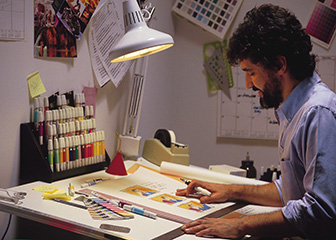Summary

| Quick Facts: Desktop Publishers | |
|---|---|
|
$36,610 per year
$17.60 per hour |
|
| Associate’s degree | |
| None | |
| Short-term on-the-job training | |
| 22,600 | |
| -15% (Decline rapidly) | |
| -3,300 | |
What Desktop Publishers Do
Desktop publishers use computer software to design page layouts for newspapers, books, brochures, and other items that will be printed or put online. They collect the text, graphics, and other materials they will need and then format them into a finished product.
Work Environment
About half of all desktop publishers work for the publishing and printing industries. Most of the rest work for companies in other industries that produce their own printed materials. Part-time work schedules are common.
How to Become a Desktop Publisher
Desktop publishers have a variety of educational backgrounds, but most complete some form of postsecondary education, such as an associate’s degree. They also usually learn some of their skills on the job. Computer skills, including knowledge of desktop publishing software, are important.
Pay
The median hourly wage of desktop publishers was $17.60 in May 2010.
Job Outlook
Employment of desktop publishers is projected to decline by 15 percent from 2010 to 2020. Employment will decline rapidly as other types of workers increasingly do desktop publishing tasks and as fewer print publications are developed.
Similar Occupations
Compare the job duties, education, job growth, and pay of desktop publishers with similar occupations.
O*NET
O*NET provides comprehensive information on key characteristics of workers and occupations.
Contacts for More Information
Learn more about desktop publishers by contacting these additional resources.










